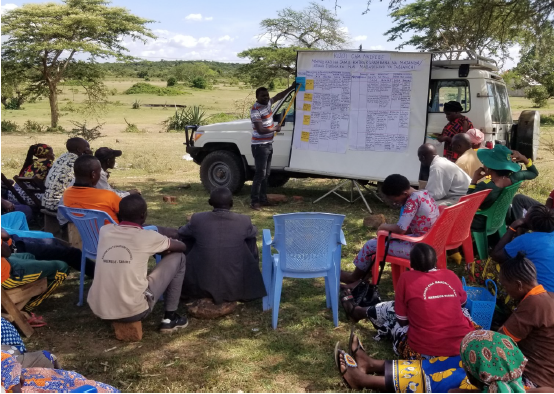From Organic Gardens to Food Entrepreneurship in Tanzanian Schools

Hands-On Learning in Food Production
Seventy eager students from a School Garden Club in Dar Es Salaam gather in the classroom, intently watching their peers prepare ubuyu—a beloved Tanzanian treat made from baobab seeds. Two facilitators from Sustainable Agriculture Tanzania (SAT), Rashid and Catherine, guide the class through the process, from sorting the seeds to packaging the final product. The demonstration captivates the rest of the students, each one eager to get a hands-on experience.

As part of the School Garden Project, 75 students from Hondogo Secondary School and 75 from Kiluvya Secondary School participated in a week-long training focused on food value addition. They learned how to process raw ingredients into products like ubuyu, yogurt, jam, and tomato sauce. This training introduced students to new ways of generating income and aimed to ignite a passion for food production and entrepreneurship.
Rashid Raswiu, one of the SAT facilitators, explains, “Most students in public schools come from families with limited financial resources. These skills can contribute to increasing their household income. And in the long term, it can help tackle youth unemployment, as not all students will pursue a vocational or higher education after secondary school."
"You can ask your friends what they want to do after graduating, and many have no idea. Before these lessons, we didn’t know anything about making products like yogurt, jam, or tomato sauce. Now, I can see how these skills will help us after school. You can earn money by selling these products." (Witness Wilson, 17)

Promoting Health and Nutrition through Organic Gardens
In addition to entrepreneurial training, the project addresses a broader goal: creating awareness about the importance of proper nutrition. SAT aims to educate both students and teachers about balanced diets, recognizing how poor nutrition negatively affects academic performance and long-term health. By establishing organic vegetable gardens which are led by teachers, the project provides practical, sustainable solutions.
To ensure the success of this initiative, SAT first trains the teachers. At the SAT Farmer Training Center, educators undergo a comprehensive Basic Organic Farming Course that equips them with essential skills, including:
- Soil testing and improvement
- Garden preparation and layout
- Organic pest, disease, and weed management
- Agroforestry systems and tree nursery establishment
- Greenhouse and screenhouse farming techniques

Additionally, teachers are trained in facilitation skills, allowing them to lead School Garden Clubs at their respective schools. These clubs have already sparked interest in gardening among many students, some of whom have started gardens at home.
“I’m grateful for this program. It has helped many of us learn useful skills, like how to manage a garden and properly water the plants. We’ve even been able to supply vegetables to our school canteen. When I graduate from Hondogo Secondary, I plan to establish a garden at home to support my family.” (Justo Elineza, 18 )
Expanding the Impact: From Dar Es Salaam to Kilimanjaro
The School Garden Project has grown from its roots in Hondogo and Kiluvya Secondary Schools in Dar Es Salaam to reach Mwanga High School, as well as Mandaka, and Vudoi Secondary Schools in the Kilimanjaro Region, impacting more than 4,200 students and teachers directly. This expansion highlights the project’s success in empowering students and teachers with knowledge of sustainable gardening, food production, and entrepreneurship.

With continued support, the School Garden Project aims to inspire even more students and teachers across Tanzania, sowing the seeds of a healthier and more sustainable future.
The School Garden Project is kindly supported by Probono School Partnership for One World.







